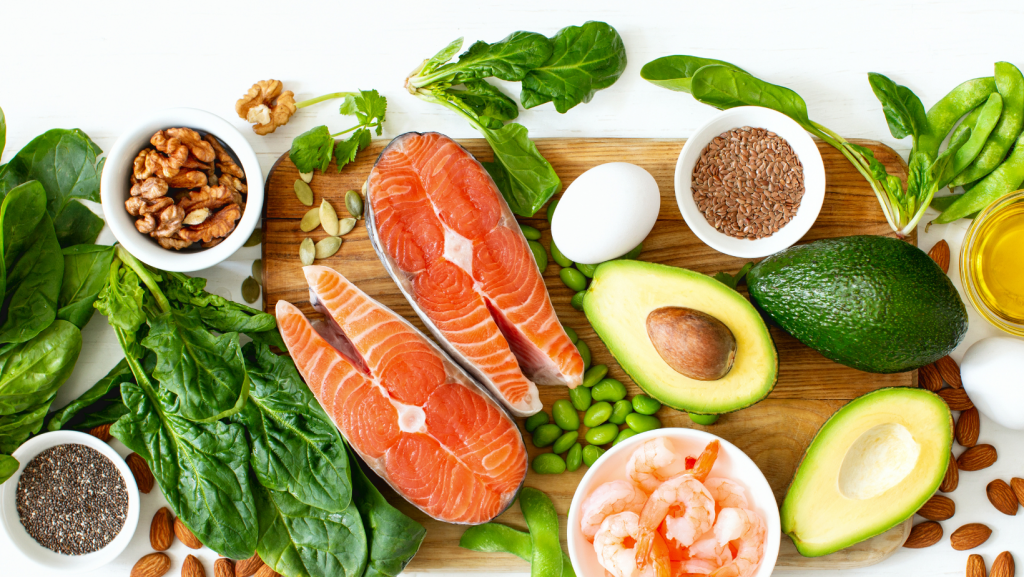How to Succeed On Your Heart Healthy Diet

It’s hard to go online or watch television without hearing about the advantages of a heart healthy diet. Friends and family members may even be discussing the best heart healthy meals. Although eating fruits and vegetables regularly has been shown to lower the risk of a heart attack, that doesn’t mean it’s easy to adopt healthier eating habits. It takes time. Nutrition experts often suggest adding specific foods rather than restricting choices. Having a solid support system is also vitally important.

Regardless of the diet, anyone considering a change in eating habits needs to have all the information. That means people considering a heart-healthy diet shouldn’t just learn about its pros and cons. They should also learn about their own heart.
Someone planning a ten-mile bike ride usually checks their tires, brakes, and other equipment before the journey. Similarly, anyone embarking on a heart-healthy diet, should know the condition of their body. They also need ongoing support. Kyla helps with both. Read on to learn about some of the best diets that include heart healthy foods and how a simple app extends healthy lifespan.

What is a Heart Healthy Diet?
Nothing kills more Americans than heart disease. Every year, it takes more than 700,000 lives. In the United States, it’s responsible for 20% of the deaths every year. The sad truth is many of those deaths are preventable with the proper diet and exercise. Studies have consistently demonstrated that having high blood pressure, excess fat around the midsection, diabetes, and hypertension put people at an increased risk for heart disease. So does dyslipidemia – high levels of lipids in the bloodstream. Lipids like cholesterol and triglycerides are transported through the bloodstream to provide energy for the body, among other activities. Low-density lipoprotein (LDL) is often referred to as the “bad cholesterol” as it contributes to the formation of arterial plaque. Left untreated, this buildup can result in heart attacks and strokes.

There are many reasons to be on a heart healthy diet but one of the primary concerns for many people who are worried about their cardiovascular health is how to lower LDL cholesterol. Certain eating habits have been shown to increase the level of lipids in the blood – including heavy consumption of processed foods, sugar-sweetened drinks and trans-fats. Trans-fats are often listed on ingredient labels as “partially hydrogenated oils” and can be found in stick margarines, fried foods, cakes, cookies, and many other “store bought treats.” So anyone wondering how to lower cholesterol should start by reducing consumption of these foods.

However, instead of just eliminating foods that are heavily processed or are high in trans-fats and sugar, a helpful starting point is to make some simple changes in eating habits by adding food good for heart health. No matter what the diet, one bit of advice applies universally. Use smaller plates. While it may seem silly, it turns out that people are less likely to overeat when the plate is small. Studies have consistently shown this, with one noting that, “plate size had significant effects on estimated satiety” or the feeling of fullness “…with the small plate associated with higher estimated satiety and lower estimated satiety than the large plate.”
One thing Europeans consistently comment on is how huge American plates are. Start with a small plate and make sure getting “seconds” involves a walk to the kitchen rather than reaching across the table. It’s also important to stay focused on the meal. So besides eating heart healthy foods, meals should be consumed at a table rather than in front of a TV or while scrolling through a phone.
The notion of a “cardiac diet” has been around for decades. Beginning in 1958, the Seven Countries Study revealed a lower rate of heart attacks in countries where diets were higher in fruits, vegetables, grains, beans, and fish. Later studies showed that eating fruits and vegetables every day and exercising could cut an individual’s heart attack risk by over 40%.
Of course the problem isn’t knowledge. It’s overcoming habits. That’s why Kyla can be a helpful partner. Anyone wondering how to lower cholesterol, should know that getting an at-home lipid panel from Kyla is a good start to learning about their heart health. While some companies charge hundreds of dollars for similar tests, a $99 at-home test from Kyla not only provides information on the cardiovascular system, including the levels of cholesterol and triglycerides, but it also offers information on blood sugar, hormones, vitamins, and much more.
Downloading the free Kyla app also allows users to input data and receive tailored daily plans that cover nutrition, exercise, meds, and supplements all based on the at-home blood test. Becoming part of this program means more than just enjoying a heart healthy diet but also working with a supportive partner that encourages not just positive food choices but tasty heart healthy foods that improve longevity.
The Big Three Heart Healthy Diets
What is a heart healthy diet? It starts with turning a dinner plate into a rainbow. That’s because the core of any healthy diet is variety. Anyone looking for food good for heart health usually starts with fruits and vegetables. However, variety is the key to getting the right mix of vitamins and nutrients. Someone who just likes, say, corn could be missing out on the nutrients found in spinach or carrots. Meat is no longer the cornerstone of a meal, but rather a bit of flavorful protein. While red meat is by no means forbidden, it should be limited. Instead, most protein in heart healthy meals comes from chicken, fish, beans, and legumes.
The Mediterranean Diet is probably the most famous of the heart healthy diets. Recognized as the “intangible cultural heritage of France and Italy, Greece, Spain and Morocco, respectively” by the United Nations Educational, Scientific and Cultural Organization (UNESCO), it’s a very specific way of eating. Besides heart healthy foods like legumes, vegetables, non-refined cereals, nuts and olive oil, eating “the Mediterranean way” means using olive oil daily, having fresh fruit as a snack or as dessert, and adding cheese to salads or stews while enjoying a small glass of red wine. Red meat is only eaten on special occasions.

Besides being the diet of choice for anyone wondering how to lower cholesterol, the heart healthy meals in the Mediterranean Diet have also been shown to reduce cancer rates among adherents. The American Heart Association recently ranked it in the top three among the best heart friendly diets.
As Christopher D. Gardner explained to the American Heart Association News. “The number of different, popular dietary patterns has proliferated in recent years, and the amount of misinformation about them on social media has reached critical levels. The public – and even many health care professionals – may rightfully be confused about heart-healthy eating, and they may feel that they don’t have the time or the training to evaluate the different diets.” That’s why members of the association decided to evaluate them themselves.
Among the group, pescatarian is considered the second best heart healthy diet. Basically, this diet means not eating any meat except for fish and seafood. Some choose to eat eggs and dairy as well – basically vegetarians who cheat a little. One study showed female pescatarians gained 2.5 fewer pounds each year than women who ate meat while an older study showed that vegetarians were far less likely to die from heart disease than meat eaters.
Yet amongst cardiac specialists, the winner among the heart healthy diets is one designed especially as a heart friendly diet. The Dietary Approaches to Stop Hypertension or DASH diet is described as “…a flexible and balanced eating plan that helps create a heart-healthy eating style for life.” Like the other heart healthy diets, the DASH diet focuses on eating lots of fruits, vegetables, fruits, and whole grains along with lower-fat dairy products along with nuts, beans and vegetable oils. As with the other two, this cardiac diet emphasizes lean meats like poultry and fish while reducing consumption of fatty meats, full-fat dairy products and coconut, palm kernel, and palm oils that are high in saturated fats. It also limits sugar-sweetened beverages.
Anyone wondering how to lower LDL cholesterol could do a lot worse than the DASH diet. That’s because this diet focuses on specific daily and weekly nutritional goals like making sure to eat four to five servings daily of fruits and vegetables while limiting salt intake to less than 2300 milligrams per day.
Having daily and nutritional goals is a big part of Kyla’s app, which offers feedback and a road map toward not just a heart friendly diet but a long and healthy life. There are even heart healthy diet recipes like green bean tofu scramble and poke tuna cucumber boats. Chipotle lime blackberry chicken or cranberry almond crusted salmon are other great foods for the heart.
Having a trusted partner like Kyla means getting tested before embarking on any diet. Just a simple needle prick and the results of an at-home test not only includes a lipid panel for heart health but also information on cortisol, thyroid, and hormonal levels. This is vital information that will help patients evaluate their next steps. Coupled with Kyla’s personalized nutrition recommendations, including calorie intake, micronutrients, and meal suggestions tailored to individual health risks, allergies, and fitness goals, accessing the Kyla app is about more than just dieting. It’s about taking a whole body approach to nutrition and extending healthy lifespan. That’s why a heart healthy diet is just the first step.

Sources:
- Diab, Alaa et al. “A Heart-Healthy Diet for Cardiovascular Disease Prevention: Where Are We Now?.” Vascular Health and Risk Management. April 2023. https://www.ncbi.nlm.nih.gov/pmc/articles/PMC10128075/
- “Heart-healthy Diet: Eight Steps to Prevent Heart Disease,” Mayo Clinic. April 4, 2024. https://www.mayoclinic.org/diseases-conditions/heart-disease/in-depth/heart-healthy-diet/art-20047702
- ”Heart Disease and Stroke Prevention,” New York State Department of Health. https://www.health.ny.gov/diseases/cardiovascular/heart_disease
- Pappan N, Awosika AO, Rehman A. Dyslipidemia. Treasure Island (FL): StatPearls Publishing; 2024. https://www.ncbi.nlm.nih.gov/books/NBK560891/
- “What Are Trans Fats?” American Heart Association. March 23, 2017. https://www.heart.org/en/healthy-living/healthy-eating/eat-smart/fats/trans-fat
- Peng, M. “How does plate size affect estimated satiation and intake for individuals in normal-weight and overweight groups?.” Obesity Science & Practice. June 27, 2017. https://www.ncbi.nlm.nih.gov/pmc/articles/PMC5598018/
- Walsh, Karla. “The 10 Best Diets for Better Heart Health, Ranked by Cardiologists,” Eating Well. May 3, 2023. https://www.eatingwell.com/article/8045063/best-diets-for-heart-health-ranked-by-cardiologists/
- UNESCO . Representative List of the Intangible Cultural Heritage of Humanity Representative List of the Intangible Cultural Heritage of Humanity. UNESCO; Paris, France: 2013.
- Mentella, Maria Chiara et al. “Cancer and Mediterranean Diet: A Review.” Nutrients. September 2, 2019. https://www.ncbi.nlm.nih.gov/pmc/articles/PMC6770822/#B29-nutrients-11-02059
- Jennings, Kerri-Ann MS, RD. “What Is a Pescatarian and What Do They Eat?,” Healthline. April 24, 2023. https://www.healthline.com/nutrition/pescatarian-diet
- Rosell, M et al. “Weight gain over 5 years in 21,966 meat-eating, fish-eating, vegetarian, and vegan men and women in EPIC-Oxford.” International journal of Obesity (2005) vol. 30,9 (2006). https://pubmed.ncbi.nlm.nih.gov/16534521/
- Key, T J et al. “Mortality in vegetarians and non-vegetarians: a collaborative analysis of 8300 deaths among 76,000 men and women in five prospective studies.” Public health nutrition vol. 1,1 (1998): 33-41. https://pubmed.ncbi.nlm.nih.gov/10555529/
- “DASH Eating Plan,” National Heart, Blood and Lung Institute. https://www.nhlbi.nih.gov/education/dash-eating-plan